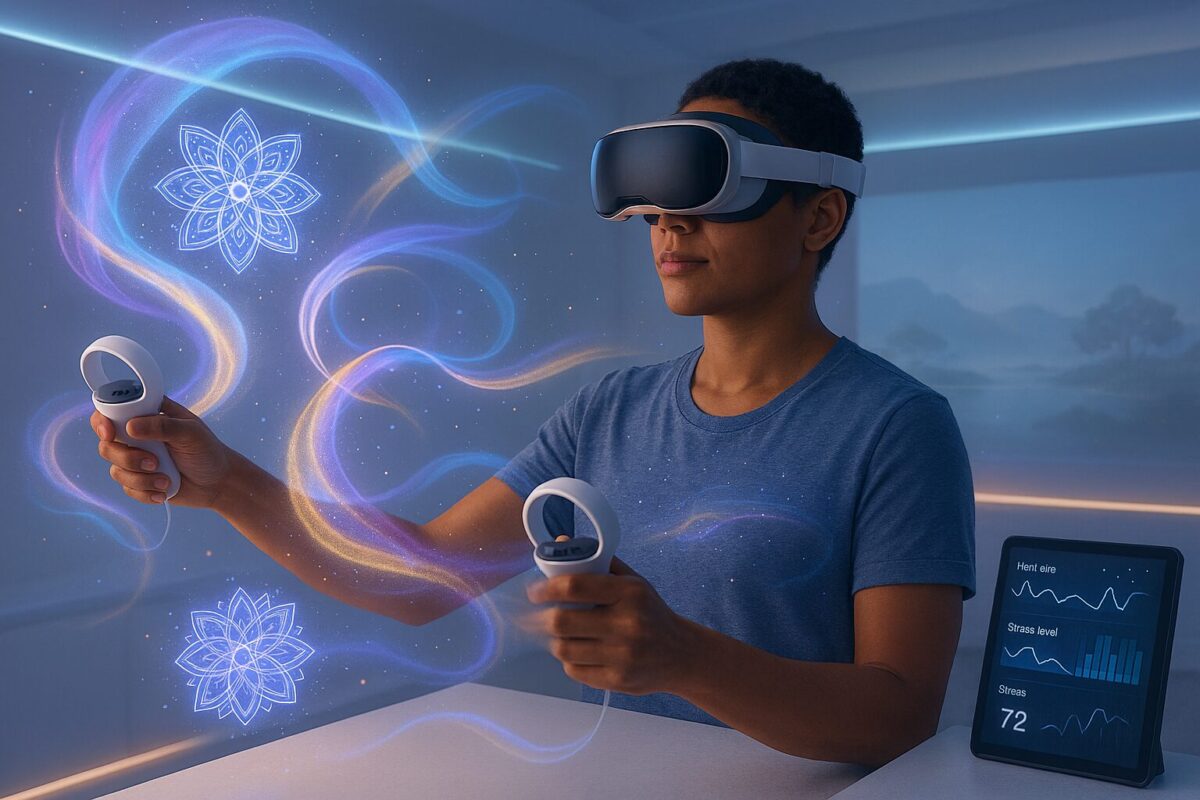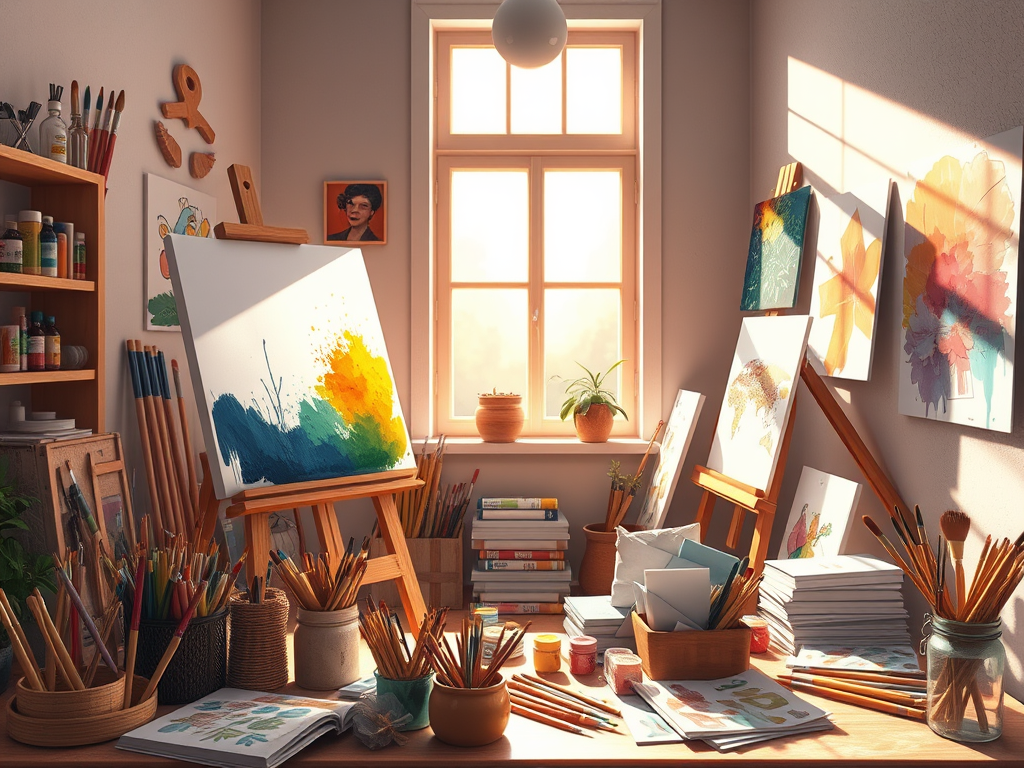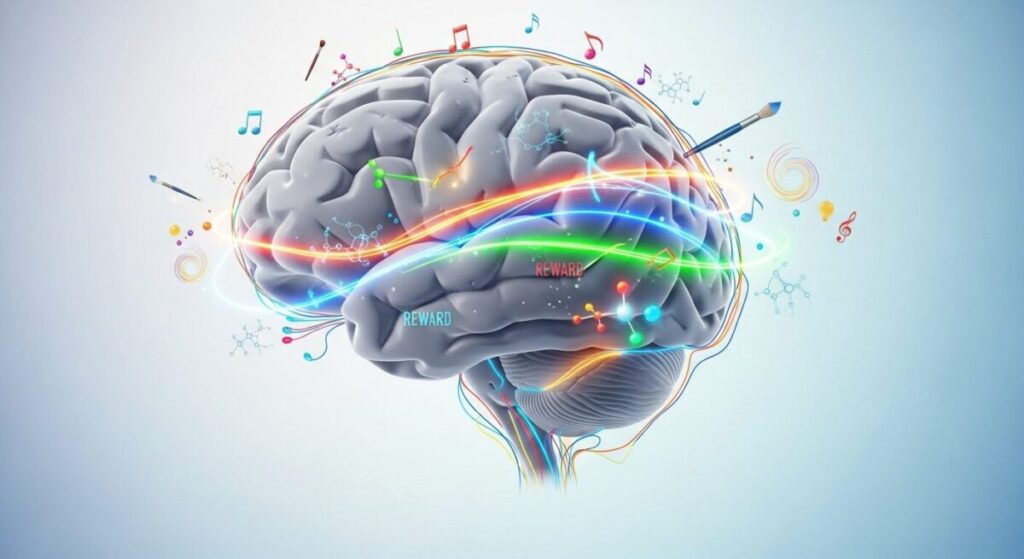The world of art has transformed dramatically with the rise of digital technology, opening exciting new pathways for art for relaxation in the modern age. Digital art therapy has emerged as a powerful tool that combines traditional artistic healing with cutting-edge technology, making therapeutic art accessible to anyone with a smartphone or tablet. This revolutionary approach eliminates common barriers like expensive supplies, messy cleanup, and the fear of making permanent mistakes, allowing people to explore their creativity in a stress-free digital environment.
Key Points Summary
- Digital art therapy offers mess-free, accessible creative expression using devices like tablets and smartphones
- Apps like Procreate provide unique features such as “undo” buttons and symmetry tools that reduce creative anxiety
- Digital mandalas, mindful coloring apps, and neurographic art techniques promote flow states and mindfulness
- Research shows even brief digital art engagement improves mood, reduces stress, and combats loneliness
- Different digital mediums suit various therapeutic needs and skill levels

What Makes Digital Art Therapy Special?
Unlike traditional art forms that require specific materials and dedicated spaces, digital art for relaxation breaks down these barriers completely. Imagine being able to paint without worrying about spilling watercolors on your carpet, or sculpting without needing clay and tools. Digital platforms offer this freedom while providing therapeutic benefits that rival traditional art therapy methods.
The magic lies in the technology itself. Features like unlimited “undo” options remove the fear of making mistakes – one of the biggest obstacles preventing people from expressing themselves creatively. This psychological safety net allows for true experimentation and play, which are essential components of therapeutic art practice.Recent research confirms the effectiveness of digital approaches to art therapy. Psychotherapy interventions increasingly utilize digital technologies to improve access to therapy and its acceptability, with studies showing that art therapy has supported improved mental health outcomes for people who have experienced trauma, people with eating disorders, schizophrenia and dementia, as well as children with autism.
Popular Digital Art Therapy Techniques
Digital Mandalas and Pattern-Making
Creating digital mandalas represents one of the most effective forms of modern digital art therapy. Apps like Procreate include built-in symmetry tools that transform simple strokes into complex, mesmerizing patterns. This process naturally induces a flow state – that magical mental zone where time seems to disappear and stress melts away.
The beauty of digital mandala creation lies in its accessibility. You don’t need years of artistic training to create stunning, therapeutic artwork. The symmetry tools do much of the heavy lifting, allowing you to focus on the meditative aspects of mark-making and color selection.
Mindful Coloring Apps
Digital coloring books have revolutionized the traditional coloring experience. Unlike physical coloring books that can be completed only once, digital versions offer infinite possibilities. You can experiment with different color schemes, zoom in for detailed work, and even animate your creations.
Popular apps like Colorfy and Pigment provide structured, calming activities that can be accessed anytime, anywhere. The variety of available palettes – from realistic colors to fantasy gradients – expands creative possibilities far beyond what traditional media can offer.
Digital Neurographic Art
Neurographic art translates beautifully to digital formats. This technique involves creating free-flowing lines and mindfully rounding their intersections, promoting a meditative state. Digital platforms enhance this practice by allowing artists to work on multiple layers, experiment with different brush textures, and easily adjust line weights without starting over.
The ability to zoom in for detailed intersection work while maintaining the overall composition makes digital neurographic art particularly satisfying and therapeutically effective.
Comparative Analysis: Traditional vs. Digital Art for Mindfulness
| Aspect | Traditional Drawing | Digital Art (Procreate) | Watercolor Painting | Clay Sculpting |
|---|---|---|---|---|
| Accessibility | Very high – materials everywhere | Low initial cost, high ongoing value | Moderate – specific supplies needed | Moderate – clay and tools required |
| Sensory Experience | Direct paper texture feedback | Screen/stylus mediated, highly visual | High – wet, fluid, color-focused | Very high – direct tactile engagement |
| Mistake Control | Low – erasing imperfect | Very high – unlimited undo/layers | Low – unpredictable medium | High – reshapable before firing |
| Mindful Features | Repetitive shading patterns | Symmetry tools, clean environment | Water flow focus | Rhythmic kneading and shaping |
| Best For | Quick stress relief, journaling | Perfectionists, limited space/budget | Emotional expression, letting go | Grounding anxiety, physical processing |
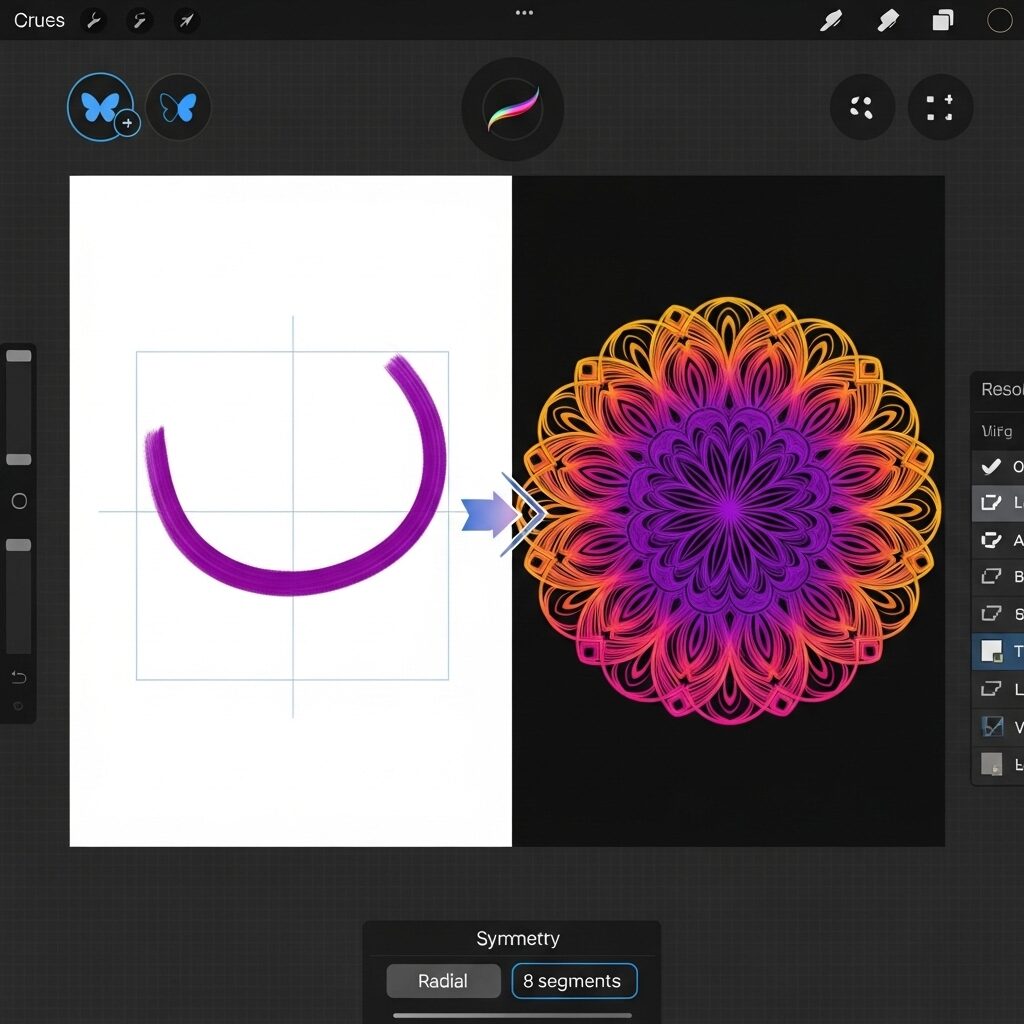
Getting Started with Digital Art for Relaxation
Choosing Your Digital Platform
For beginners exploring art for relaxation in the modern age, start with user-friendly apps that prioritize ease of use over complex features. Here are some excellent options:
- Procreate (iPad): Professional-grade tools with intuitive interface
- Adobe Fresco: Cross-platform with realistic brush simulations
- Autodesk Sketchbook: Free with robust basic tools
- ArtRage: Mimics traditional media convincingly
Essential Digital Art Techniques for Relaxation
- Start Simple: Begin with basic shapes and gradual color fills
- Use Pressure Sensitivity: Vary your stylus pressure for natural-looking strokes
- Layer Wisely: Separate elements on different layers for easy editing
- Embrace Happy Accidents: Use mistakes as opportunities for creative discovery
- Set Time Limits: Practice mindful sessions of 15-30 minutes
The Science Behind Digital Art Therapy
According to the American Congress of Rehabilitation Medicine, studies have shown that simply observing art can boost serotonin and increase blood flow to the brain. When we actively create digital art, these benefits multiply. The combination of visual engagement, fine motor control, and creative decision-making activates multiple brain regions simultaneously, promoting neuroplasticity and stress reduction.
The therapeutic power of digital art extends beyond individual creation. Social features in many apps allow users to share their work and connect with supportive communities, combating the isolation that often accompanies stress and anxiety.
Overcoming Common Digital Art Challenges
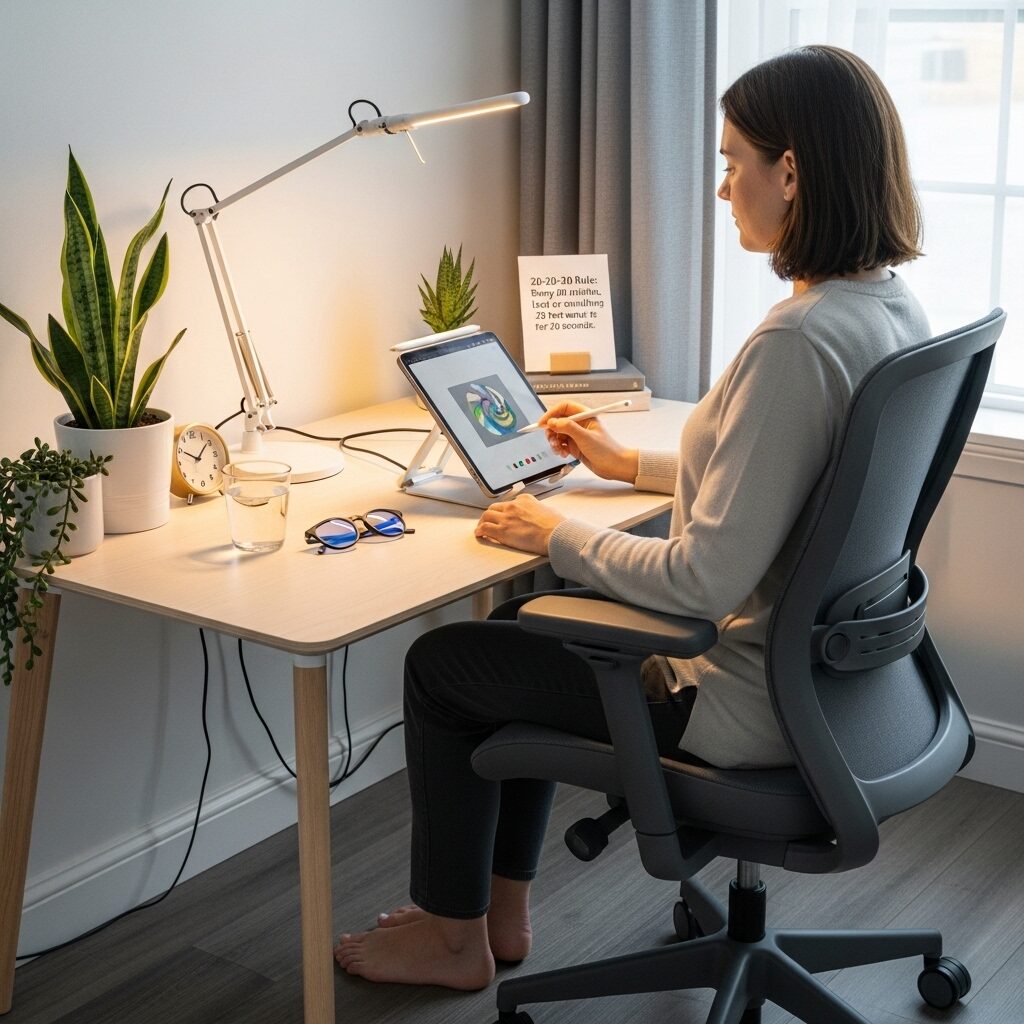
Screen Fatigue Prevention
Extended screen time can cause eye strain and headaches. Combat this by:
- Using apps with dark mode options
- Taking regular breaks using the 20-20-20 rule (every 20 minutes, look at something 20 feet away for 20 seconds)
- Adjusting screen brightness to match your environment
- Consider apps that offer blue light filtering
Technical Anxiety
Many people feel intimidated by digital tools. Remember:
- Start with simple, single-function apps
- Watch tutorial videos at your own pace
- Practice basic gestures (pinch to zoom, two-finger undo) repeatedly
- Join beginner-friendly online communities for support
The Future of Digital Art Therapy
The integration of AI into art therapy presents promising avenues for innovation and progress within the field. Emerging technologies like AI-assisted art creation and virtual reality art spaces are expanding therapeutic possibilities even further.
These advances don’t replace human creativity but rather enhance our natural artistic abilities, making therapeutic art more accessible to people with physical limitations or severe creative blocks.
Building a Sustainable Digital Art Practice

Creating Your Routine
Consistency matters more than duration. Consider these approaches:
- Morning Mindfulness: 10 minutes of digital doodling with coffee
- Lunch Break Creativity: Quick digital sketching to decompress mid-day
- Evening Wind-down: Gentle color blending or mandala creation before bed
Tracking Your Progress
Many digital art apps include built-in progress tracking, showing your artistic journey over time. This visual record of growth can be incredibly motivating and therapeutic, providing tangible evidence of your creative development.
The digital canvas has truly revolutionized art for relaxation in the modern age, making therapeutic creativity accessible to anyone with a smartphone or tablet. Whether you’re drawn to the meditative flow of digital mandalas, the structured calm of digital coloring, or the free-form expression of neurographic art, digital platforms offer unique advantages that complement traditional artistic practices. By embracing these technological tools while maintaining focus on mindfulness and self-expression, you can develop a sustainable creative practice that fits seamlessly into modern life, providing stress relief and artistic fulfillment whenever and wherever you need it most.
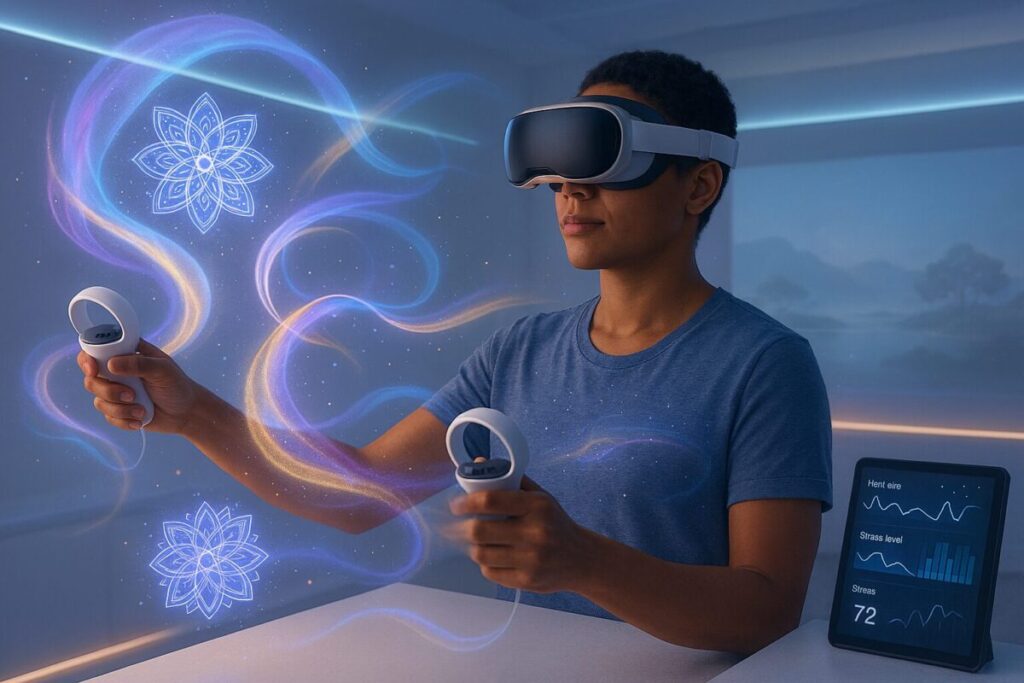
Frequently Asked Questions
Q: Do I need expensive equipment to start digital art therapy? A: No! Many smartphones and basic tablets work well with free apps. Start simple and upgrade as your interest grows.
Q: Can digital art be as therapeutic as traditional art? A: Research shows digital art therapy provides similar mental health benefits, with added advantages like unlimited experimentation and easier cleanup.
Q: How long should I spend on digital art for relaxation? A: Even 10-15 minutes can provide stress relief benefits. Listen to your body and start with shorter sessions.
Q: Is digital art suitable for children? A: Yes! Digital art can be excellent for children, offering mess-free creativity and age-appropriate apps with parental controls.
Q: What if I’m not good at traditional art? A: Digital art’s forgiving nature (unlimited undo, layers, guides) makes it perfect for beginners. Focus on enjoyment over perfection.
Additional Resources
- American Art Therapy Association – Professional art therapy information and resources
- Digital Art Therapy Research – Academic studies on digital art therapy effectiveness
- Mental Health Benefits of Art – Scientific research on art therapy for mental wellness
- Procreate Learning Resources – Official tutorials and guides for popular digital art app
- Blue Light and Eye Health – Information on preventing digital eye strain
Citations
- Frontiers in Psychology. (2021). Art Therapy in the Digital World: An Integrative Review. https://www.frontiersin.org/journals/psychology/articles/10.3389/fpsyg.2021.600070/full
- University of New South Wales. (2024). Research shows art therapy brings benefits for mental health. https://www.unsw.edu.au/newsroom/news/2024/04/lost-words-research-shows-art-therapy-brings-benefits-mental-health
- Husson University. (2024). Benefits of Art Therapy for Mental and Physical Health. https://www.husson.edu/online/blog/2024/02/benefits-of-art-therapy
- Nature Communications. (2024). Digital art exhibitions and psychological well-being in Chinese Generation Z. https://www.nature.com/articles/s41599-024-02718-x

